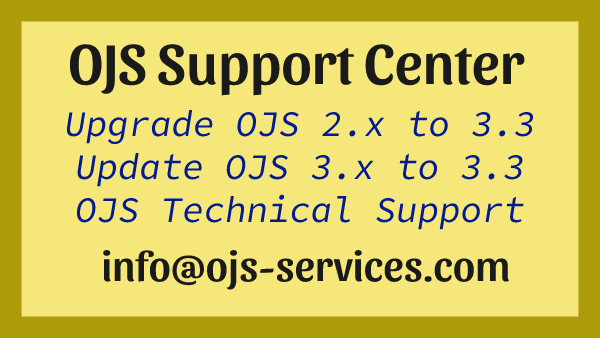The success of a peer-reviewed academic journal largely depends on having a strong and effective editorial team. The editorial team ensures that the journal adheres to academic standards, oversees the thorough review and publication of high-quality articles, and acts as a bridge between authors, reviewers, and readers. Whether you are establishing a new journal or seeking to build a more professional editorial board for an existing one, this guide will detail the key roles and responsibilities that are essential for an editorial team.
The composition of an editorial team can vary based on the journal’s scope, size, and target audience. Some roles are necessary for every academic journal, while others may be added depending on specific needs and objectives. Therefore, it is crucial to understand each role’s function and how it contributes to the overall success of the journal.
Below, we have divided the roles into two categories: Essential Roles and Additional Roles That Can Add Value. This guide provides detailed explanations of each role’s responsibilities, helping you structure the most effective editorial team possible.
Essential Roles
- Editor-in-Chief
- Responsible for the overall functioning of the journal, including its publishing policies and academic quality.
- Oversees the entire publication process, makes decisions regarding article selection, and ensures the journal meets academic standards.
- Associate Editor
- Assists the Editor-in-Chief and manages the review process for specific groups of articles or topics.
- Helps distribute the workload and organizes the review process efficiently.
- Section Editors
- Assigned to different sections of the journal, especially if there are distinct academic fields covered.
- Manages the review and evaluation processes for articles related to their section.
- Language Editor
- Reviews the language quality of articles, correcting grammar and writing issues.
- Ensures that the articles are academically sound and comprehensible.
- Ethics Editor
- Oversees compliance with ethical standards and verifies the required ethics approvals.
- Manages plagiarism checks and reports on ethical issues.
- Sets and enforces research ethics standards and handles procedures in case of ethical violations.
- Digital Platforms Manager
- Ensures the proper functioning of the journal management system (e.g., OJS).
- Manages DOI (Digital Object Identifier) assignments and administration.
- Oversees online article tracking systems and updates.
- Manages integration with digital archiving and indexing systems.
- Optimizes the electronic publishing process of the journal.
Editorial Board
- The Editorial Board consists of respected experts who contribute to the journal’s prestige, provide guidance, and may be consulted as needed. Members of this board are typically well-regarded in the field covered by the journal.
Additional Roles That Can Add Value
- Review Coordinator
- Responsible for assigning articles to appropriate reviewers and tracking the review process.
- Ensures timely feedback from reviewers and organizes the review workflow.
- Supports editors, associate editors, and section editors as needed.
- Technical Editor
- Reviews the technical formatting and ensures that articles adhere to journal standards.
- Manages details related to tables, figures, and references.
- Statistics Editor
- Verifies the accuracy of statistical analyses in research articles.
- Ensures that data is used correctly and appropriately.
- Advisory Board Members
- A group of experts that provides strategic guidance to the journal and offers recommendations for enhancing quality.
- Honorary Editor
- A title granted to individuals who have made significant contributions to the journal in the past.
- Primarily an honorary position, aimed at increasing the journal’s prestige.
- Social Media & Communications Editor
- Manages the journal’s social media accounts, shares announcements, and promotes the journal within academic circles.
- Managing Editor
- Ensures that all editorial processes run smoothly, organizes the editorial team, and monitors workflow.
- Graphic & Layout Editor
- Responsible for the design and visual presentation of articles, ensuring they are visually clear and professionally formatted.
- Editorial Office/Secretary
- Manages communications and administrative tasks in the editorial process. Acts as a liaison between authors, reviewers, and editors.
OJS Support and Flexibility
- The OJS (Open Journal Systems) platform we implement for managing academic journals supports all of the above roles and allows for the creation of new roles when necessary.
Considerations When Forming an Editorial Team
- Scope and Size of the Journal: Determine which roles are necessary based on the academic field and scope of your journal. For example, section editors may be essential if your journal has multiple distinct sections.
- Expertise and Experience: Carefully select editorial team members based on their academic expertise and experience. Aim to include experts who can enhance the academic quality of the journal.
- Clarity of Roles: Clearly define each role and its responsibilities to ensure effective division of tasks and a productive working environment. This helps streamline editorial processes.
- Transparency of Information: Providing institutional details, country, email address, and academic identifiers (e.g., ORCID, WoS ResearcherID, Google Scholar ID) for each editorial board member will enhance transparency and trust.
This guide aims to help you establish or restructure your academic journal’s editorial team. By tailoring these roles and responsibilities to your journal’s specific needs, you can enhance the academic quality and overall success of your publication.



Comments are closed